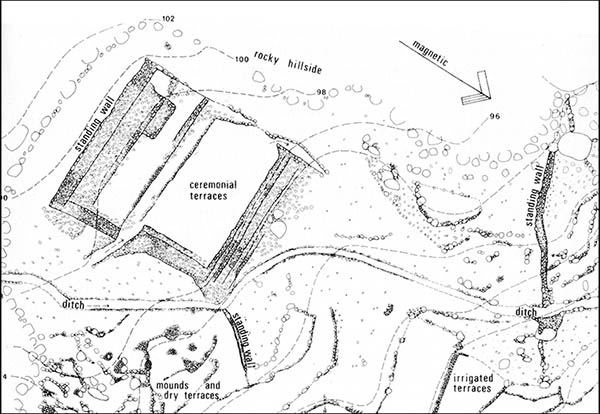 |
 |
 |
 |
||||||
|
|
|
|
|
|
|
|
|
|
|
|
|
|||||||||
 |
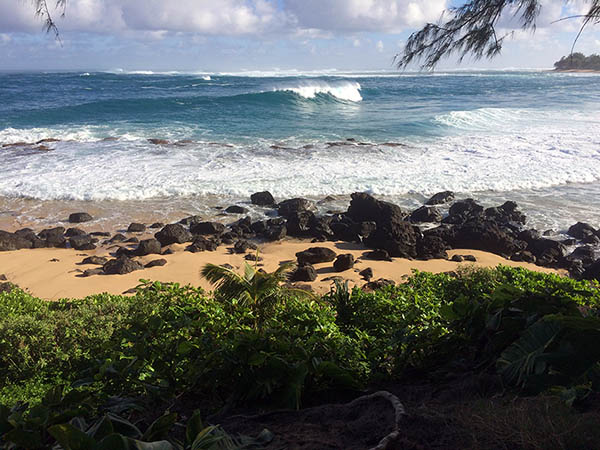
The remnants of Hale Pohaku, 2018. There are at least three known heiau [Hawaiian temple platforms] in Hā‘ena (besides the Hula School) of which there is little oral history. One is located up in the back of Limahuli Gardens. Chipper discussed two others: Hale Pohaku, along the beach, and a heiau in the back of Manoa Valley. The remnants of the first heiau lie along the beach towards Makua Bay and just below the road. Apparently it was destroyed when the road was put through, but the rocks that comprised it still remain. According to Chipper, "there's no real mo‘olelo associated with that heiau. The oral traditions that have been passed down indicate that that was a sacred area where they actually raised the small white dogs that were used by the al‘'i as a food source, also as a kind of relief for the chiefess after she gave birth. If the child was given to another member of the family to raise, the chiefess would nurse these dogs, who had had their teeth pulled out, to relieve the pressure in her breasts from the milk."
|
 |
||||||
 |
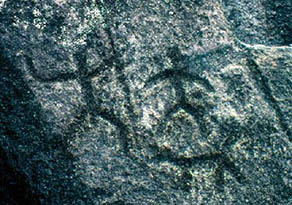
|
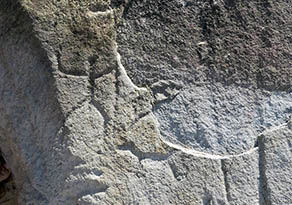
|
 |
|||||
 |
"The name that is associated with that area today is Hale Pohaku, which means 'house of rock.' And it was just recently that we discovered a petroglyph there, which interestingly--because there was a dog there--kind of supports that story. "I think that area was very heavily disturbed when they put in the highway, because there's really nothing left, as far as any walls or structure associated with that." The heiau in the back of Manoa valley is even more elusive. “We know very, very little about it,” Chipper explains, “except that it was mapped, and its back there, and to my knowledge there are no oral traditions that associate its function or use within the ahupua‘a. It's labeled a luakini primarily because of its architectural design. To my knowledge, there has never been any in depth archaeological work done on it.”
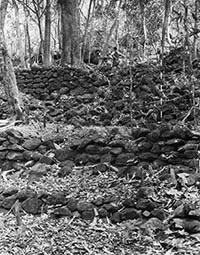
Archaeologist Timothy Earle explored Manoa Valley in the 1970s. He wrote that “a complexed terraced feature of probable sacred significance is located above the ditch and pondfields” at the top of the valley’s agricultural terraces. There are two main terraces in this feature which were constructed across a natural depression. The front wall of the lower terrace is very impressive; it stands 3.5 m high and had four definite tiers. The east and south walls are thick (2.0-2.7 m) double-faced, rubble-filled walls. These walls are beautifully constructed of angular basalt with careful facing. They are freestanding and enclose the terraced area. "Along the rear of both terraces are narrow secondary terraces at the base of the rear wall. As seen in Figure 6.6 [below], the unusually fine construction and internal complexity of the design indicate a ceremonial use for the terraces. The feature was probably a small heiau (religious shrine). The lower terrace was once irrigated by a cut in the east wall made after the wall itself was built. This could indicate either that the shrine helda sacred field or that it was used for agriculture after abandonment as a shrine....The site has not been used within informant memory.”
|
 |
||||||

|
|
||||
Copyright 2018 Pacific Worlds & Associates • Usage Policy • Webmaster |
||||
